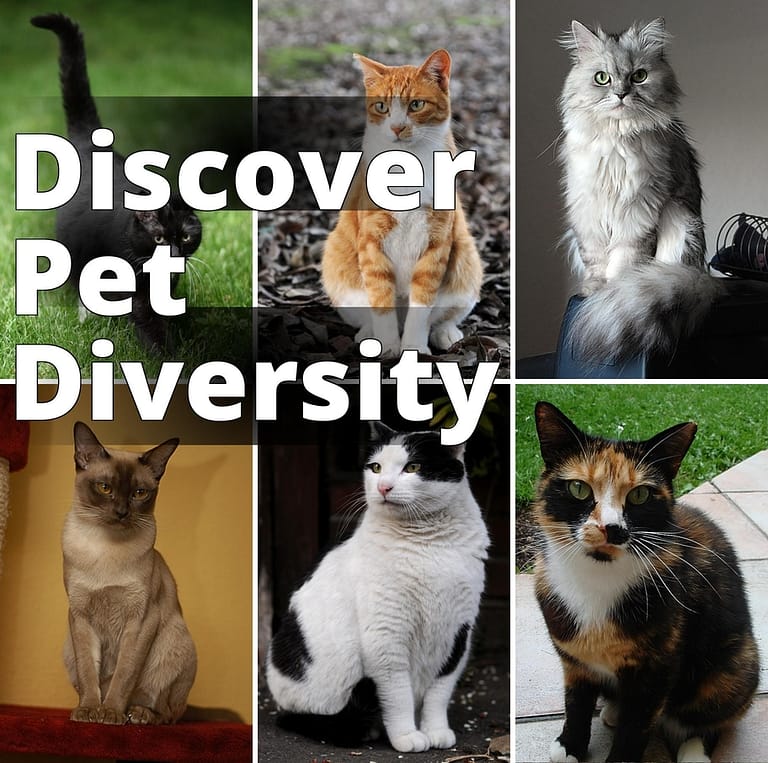The Ultimate Cattle Dog Care Guide for Australian Owners
Are you an Australian dog lover interested in owning a cattle dog? Cattle dogs, also known as Australian cattle dogs or blue heelers, are an important part of Australia’s culture and livestock industry. Their hardworking and loyal nature makes them great pets for the right owner. This complete guide to cattle dog care will provide you with everything you need to know about caring for these beloved animals.

Overview of the Breed
Cattle dogs were originally bred in the 19th century to help farmers manage their herds in the Australian outback. They were created by crossing various breeds, including the dingo, to produce a dog that was both tough and resilient. Today, cattle dogs are known for their intelligence, loyalty, and work ethic.
Their Role in Australia’s Livestock Industry
Cattle dogs play an integral part in Australia’s livestock industry. They are trained to work alongside their human handlers, using a combination of barking and nipping to direct livestock. They are well-suited for the job due to their intelligence and work ethic. Cattle dogs are also used for tasks such as mustering, droving, and yard work.
The Ultimate Cattle Dog Care Guide for Australian Owners
- The cattle dog breed is an integral part of Australia’s livestock industry, with the Blue Heeler and Red Heeler being the most common types.
- Proper training and care, including socialization, obedience, and exercise, are essential for owning a cattle dog as a pet in Australia.
- Cattle dogs are celebrated in Australian culture through literature, film, TV, events, and competitions.

Types of Cattle Dogs in Australia
Blue Heeler and Red Heeler: Physical Appearance and Temperament
There are two main types of cattle dogs in Australia: blue heelers and red heelers. Blue heelers have a predominantly blue coat with black or tan markings, while red heelers have a predominantly red coat with black or tan markings. Both types of cattle dogs have similar temperaments, which are characterized by loyalty, intelligence, and a strong work ethic.
Differences between the Two Breeds
While blue heelers and red heelers have similar temperaments, there are some differences between the two breeds. Blue heelers are generally more reserved and cautious around strangers, while red heelers are more outgoing and sociable. Blue heelers also tend to have a stronger work drive, while red heelers may be more adaptable to different types of work.

Training and Care for Cattle Dogs in Australia
Socialization and Obedience Training
Proper socialization and obedience training are essential for all dogs, but they are particularly important for cattle dogs. These highly intelligent and energetic dogs need plenty of mental stimulation and physical exercise, and they can become destructive if they are bored or left alone for long periods of time. Early socialization can help prevent behavior problems such as fearfulness, aggression, and separation anxiety.
Exercise and Mental Stimulation Requirements
Cattle dogs are highly active dogs that require plenty of exercise and mental stimulation. They enjoy activities such as running, hiking, and playing fetch, and they excel at dog sports such as agility and obedience. Cattle dogs also benefit from puzzles and other mental stimulation games that challenge their problem-solving abilities.
It’s important to note that cattle dogs are not well-suited for apartment living or homes without access to a large yard or outdoor space. They thrive in environments where they can run and play, and they need plenty of opportunities to release their energy.
Case Study: The Importance of Socialization for Cattle Dogs
As a new cattle dog owner, I was excited to bring home my new puppy, Max. However, I quickly realized that raising a cattle dog was not like raising any other breed. Max was extremely energetic and high-strung, and he constantly nipped at my heels and jumped up on guests.
After some research, I learned that socialization was key to raising a well-behaved cattle dog. I enrolled Max in puppy classes and took him to the dog park several times a week. I also introduced him to new people and experiences regularly.
Over time, Max’s behavior improved dramatically. He learned how to interact with other dogs and people in a positive way, and he stopped nipping and jumping. Today, Max is a well-behaved and obedient dog who loves to play and cuddle.
This experience taught me the importance of socialization for cattle dogs. Without proper socialization, they can become anxious and aggressive, making them difficult to handle. But with early and consistent socialization, cattle dogs can become loving and loyal companions who fit seamlessly into any family.

Common Health Issues and Care
Like all dogs, cattle dogs can develop various health issues throughout their lives. Some common health problems that affect cattle dogs include hip dysplasia, deafness, and progressive retinal atrophy. To keep your cattle dog healthy, it’s important to provide regular veterinary care and to stay up-to-date on vaccinations and preventative care. Cattle dogs also benefit from regular exercise and a healthy diet that is appropriate for their age and activity level.
Nutrition and Grooming Needs
Cattle dogs have a thick, weather-resistant coat that requires regular grooming to keep it clean and healthy. They should be brushed at least once a week to remove loose hair and to prevent matting. Cattle dogs may also benefit from occasional bathing to keep their coats clean and shiny. In terms of nutrition, cattle dogs should be fed a high-quality dog food that is appropriate for their age, size, and activity level. It’s important to monitor your cattle dog’s weight and adjust their diet as needed to prevent obesity and other health problems.
| Training and Care for Cattle Dogs in Australia | Cattle Dogs as Pets in Australia |
|---|---|
| Cattle dogs need plenty of mental stimulation and physical exercise, which include running, hiking, and playing fetch, and they excel at dog sports such as agility and obedience. | Cattle dogs can make great pets for the right owner. Their intelligence, loyalty, and work ethic make them ideal for owners who enjoy activities such as hiking, running, and dog sports. Cattle dogs are also known for their affectionate and loyal nature, and they often form strong bonds with their owners. |
| They are not well-suited for apartment living or homes without access to a large yard or outdoor space. They thrive in environments where they can run and play, and they need plenty of opportunities to release their energy. | However, cattle dogs are not the right choice for everyone. These dogs require a lot of time, attention, and exercise, and they can become destructive if they are not given enough mental stimulation. Cattle dogs may also be prone to behavior problems such as nipping and herding behavior, which can be difficult to manage without proper training. |
| Cattle dogs may develop various health issues throughout their lives, and some common health problems that affect cattle dogs include hip dysplasia, deafness, and progressive retinal atrophy. | If you’re considering a cattle dog as a pet, be prepared to provide plenty of exercise and mental stimulation, and to invest in proper training and socialization. It’s also important to be aware of the challenges that come with owning a cattle dog, such as their herding behavior and high energy levels. |
Cattle Dogs as Pets in Australia
Characteristics That Make Them Great Pets
While cattle dogs are primarily known for their work in the livestock industry, they also make great pets for the right owner. Their intelligence, loyalty, and work ethic make them ideal for owners who enjoy activities such as hiking, running, and dog sports. Cattle dogs are also known for their affectionate and loyal nature, and they often form strong bonds with their owners.
Challenges of Owning a Cattle Dog
While cattle dogs can make great pets, they are not the right choice for everyone. These dogs require a lot of time, attention, and exercise, and they can become destructive if they are not given enough mental stimulation. Cattle dogs may also be prone to behavior problems such as nipping and herding behavior, which can be difficult to manage without proper training.
Tips for Choosing a Reputable Breeder or Adopting
If you’re considering adding a cattle dog to your family, it’s important to choose a reputable breeder or adoption agency. Look for breeders who prioritize the health and well-being of their dogs and who are willing to provide references and health clearances. If you choose to adopt, look for a reputable rescue organization that has experience with the breed and can provide support and resources as needed.
Advice for Families and Individuals Considering a Cattle Dog as a Pet
Cattle dogs can make great pets for the right family or individual, but it’s important to carefully consider whether this breed is the right fit for your lifestyle and personality. If you’re considering a cattle dog as a pet, be prepared to provide plenty of exercise and mental stimulation, and to invest in proper training and socialization. It’s also important to be aware of the challenges that come with owning a cattle dog, such as their herding behavior and high energy levels.

Cattle Dogs in Australian Culture
Representation in Literature, Film, and TV
Cattle dogs are an important part of Australian culture and have been featured in various works of literature, film, and television. Some notable examples include the book “The Dog Fence” by James Woodford, the movie “Red Dog,” and the TV series “McLeod’s Daughters.”
Events and Competitions That Celebrate the Breed
Various events and competitions celebrate the cattle dog breed in Australia. The Sydney Royal Easter Show features a cattle dog competition that showcases the skills and abilities of these talented dogs. Other events include the Australian Cattle Dog National Specialty Show and the Working Cattle Dog Championship.
Legacy in Australia’s Rural Communities
Cattle dogs have played an important role in Australia’s rural communities for over a century. These hardworking and loyal dogs have helped farmers and ranchers manage their herds and have become an important part of the country’s cultural heritage.
Frequently Asked Questions About Cattle Dogs in Australia
What is the lifespan of a cattle dog in Australia?
Cattle dogs typically live for 12-15 years and require plenty of exercise and mental stimulation to stay healthy and happy.
Are cattle dogs compatible with children and other pets?
Cattle dogs can be great with children and other pets if they are properly socialized and trained. However, their herding instinct may cause them to nip at small children or other animals, so it’s important to monitor their behavior carefully.
What is the best way to train a cattle dog to stop nipping?
If your cattle dog is nipping or herding, it’s essential to provide proper training and socialization. Positive reinforcement training can be an effective way to teach your dog appropriate behavior and to redirect their energy positively.
Conclusion
Cattle dogs are an iconic part of Australian culture, and their loyal and hardworking nature make them great pets for the right owner. From their history and characteristics to their training and care, we hope this guide has provided valuable information for anyone interested in owning a cattle dog in Australia. Keep in mind that owning a cattle dog requires a significant investment of time, attention, and energy. However, for those willing to put in the effort, a cattle dog can be a loving and devoted companion.




Leave a Reply